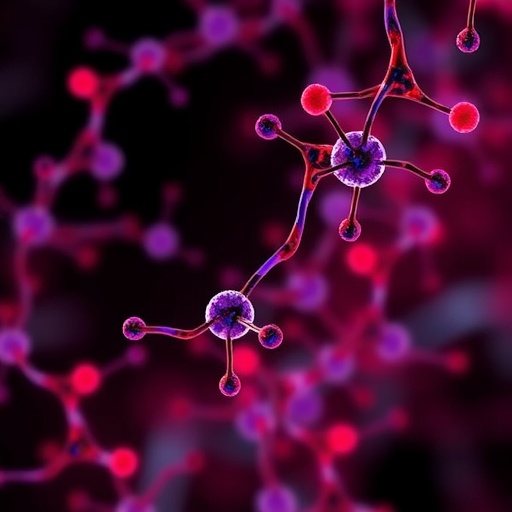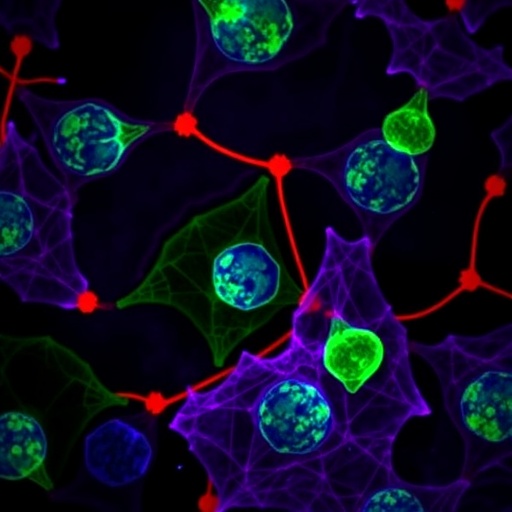Before proteins fulfill their essential roles in cells, they must be correctly folded into specific three-dimensional structures, a process that predominantly takes place within the endoplasmic reticulum (ER). This organelle acts as the cellular quality control center, ensuring that nascent polypeptide chains achieve proper configuration. When cellular stress disrupts protein homeostasis, it induces a state termed “ER stress,” challenging the ER’s folding capacity. To mitigate this, cells engage a sophisticated signaling network known as the Unfolded Protein Response (UPR), aimed at restoring ER function by transiently reducing protein synthesis and enhancing the expression of molecular chaperones. Should these measures fail, the UPR initiates programmed cell death to prevent accumulation of defective proteins.
Cancerous cells frequently exploit the UPR pathway for their survival advantage. These cells endure hostile microenvironments characterized by hypoxia and nutrient deprivation, yet they sustain rampant proliferation partly by reprogramming their UPR signaling to evade apoptosis. This adaptation not only aids tumor growth but also complicates treatment strategies. Recognizing the UPR’s dualistic nature—cell survival versus cell death—scientists have begun exploring it as a plausible therapeutic target across various malignancies.
Of particular interest is the role of the UPR in cancer-associated damage to bone tissue. Bone health relies on a delicate balance orchestrated by osteoblasts, which build bone, and osteoclasts, which resorb it. This homeostasis is crucial for maintaining skeletal integrity. Recent investigations reveal that malignancies inhabiting or metastasizing to bone hijack the UPR pathways intrinsic to these bone cells, effectively disrupting their function and causing pathological remodeling. Such aberrations manifest as skeletal-related events (SREs), which include bone fragility, fractures, and pain, severely impairing patient quality of life and prognosis.
Luminary researchers Professor Sarah A. Holstein and Dr. Molly E. Muehlebach from the University of Nebraska Medical Center have delineated these molecular intersections in a comprehensive review featured in Bone Research. Their analysis synthesizes current knowledge on how UPR components influence skeletal stem cell differentiation and how this process becomes dysregulated in malignancies like osteosarcoma, Ewing sarcoma, multiple myeloma, and bone-metastatic breast and prostate cancer. Their work illuminates the intricate crosstalk between cancer biology and skeletal physiology mediated by the UPR.
The UPR encompasses three main signaling branches: EIF2AK3 (also known as PERK), ERN1 (IRE1α), and ATF6, each initiating distinct downstream cascades. EIF2AK3 modulates translation attenuation under stress, ERN1 regulates mRNA splicing and degradation pathways, and ATF6 functions as a transcriptional activator for stress-responsive genes. Aberrations in any of these cascades can tip the balance of osteoblast and osteoclast activity, skewing the bone remodeling cycle and ultimately leading to compromised bone structure and function.
In cancer, the invasion of bone tissue entails UPR-related dysfunction wherein osteoclasts may become hyperactive, resulting in excessive bone resorption, or osteoblast activity may be suppressed, thus hindering bone formation. Alternatively, in some cases, aberrant mineralization leads to increased bone density but diminished resilience, a paradoxical form of fragility. Such distorted remodeling underscores the clinical challenges in managing cancer-induced bone disease, as conventional therapies often fail to adequately address the molecular underpinnings.
Emerging therapeutic avenues targeting the UPR pathway show promise in mitigating SREs while simultaneously attacking malignant cells in bone. Drug candidates include inhibitors of EIF2AK3, such as GSK2606414, that prevent maladaptive translation control, and ERN1 inhibitors like Sunitinib malate and Toyocamycin, which disrupt critical downstream signaling involved in tumor survival. Additionally, repressing ER-associated protein degradation using agents like CB-5083 targets proteostasis, tipping the scales in favor of apoptosis.
Beyond inhibition strategies, augmenting the cell’s natural chaperone machinery to enhance proper protein folding is under investigation. Compounds such as sodium phenylbutyrate exemplify this modality by aiding the ER in managing protein load, thereby relieving stress without inducing cell death indiscriminately. This approach may help preserve healthy bone cell function while sensitizing cancerous cells to therapy.
Notably, some drugs with affinity for bone tissue function by exploiting UPR-mediated apoptotic pathways within cancer cells. Bisphosphonates, including zoledronic acid and experimental molecules like RAM2061, inhibit the synthesis of isoprenoids necessary for post-translational modification of proteins, effectively sabotaging tumor cell viability. Similarly, proteasome inhibitors such as Oprozomib disrupt the clearance of unfolded proteins, accentuating ER stress to lethal levels selectively in malignant populations.
While early data from in vitro and animal studies are encouraging, translating these findings into clinically viable treatments requires meticulously designed trials to balance efficacy against potential off-target effects. The key challenge lies in achieving specificity—maximizing tumor and bone microenvironment targeting without impairing systemic functions or damaging healthy tissues. Such precision medicine approaches will be crucial to harnessing the full therapeutic potential of UPR modulators.
Professor Holstein emphasizes the overarching goal of this research: “Developing agents that precisely target pathological UPR activity within bone and tumor cells, while sparing normal physiological processes, represents the future of effective cancer bone disease management.” This vision aligns with advancing molecular oncology and bone biology toward integrated therapies that offer improved patient survival and quality of life.
In sum, insight into the UPR’s role in bone homeostasis under cancerous conditions is reshaping the paradigm for treating skeletal complications of malignancy. By bridging protein folding biology with bone pathology, multidisciplinary efforts continue to pave the way for innovative drug discovery, targeting a once-overlooked intracellular stress response for maximal clinical impact. The road ahead, marked by rigorous translational research, promises a new frontier in combating cancer-related bone fragility.
As the scientific community eagerly anticipates further preclinical and clinical developments, the potential of modulating the UPR pathway heralds a powerful therapeutic strategy. Such advancements could redefine not only cancer treatment but also our broader understanding of tissue-specific stress responses in human disease.
Subject of Research: Cells
Article Title: The role of the Unfolded Protein Response pathway in Bone Homeostasis and potential therapeutic target in Cancer-associated Bone Disease
News Publication Date: 28-Aug-2025
References: Muehlebach M.E., Holstein S.A. DOI: 10.1038/s41413-025-00457-6
Image Credits: “Giant cell tumor of bone, tibia” by cnicholsonpath
Keywords: Cancer research, Signal transduction, Protein folding, Unfolded protein response, Bone diseases, Osteosarcoma, Multiple myeloma, Metastasis, Drug discovery




